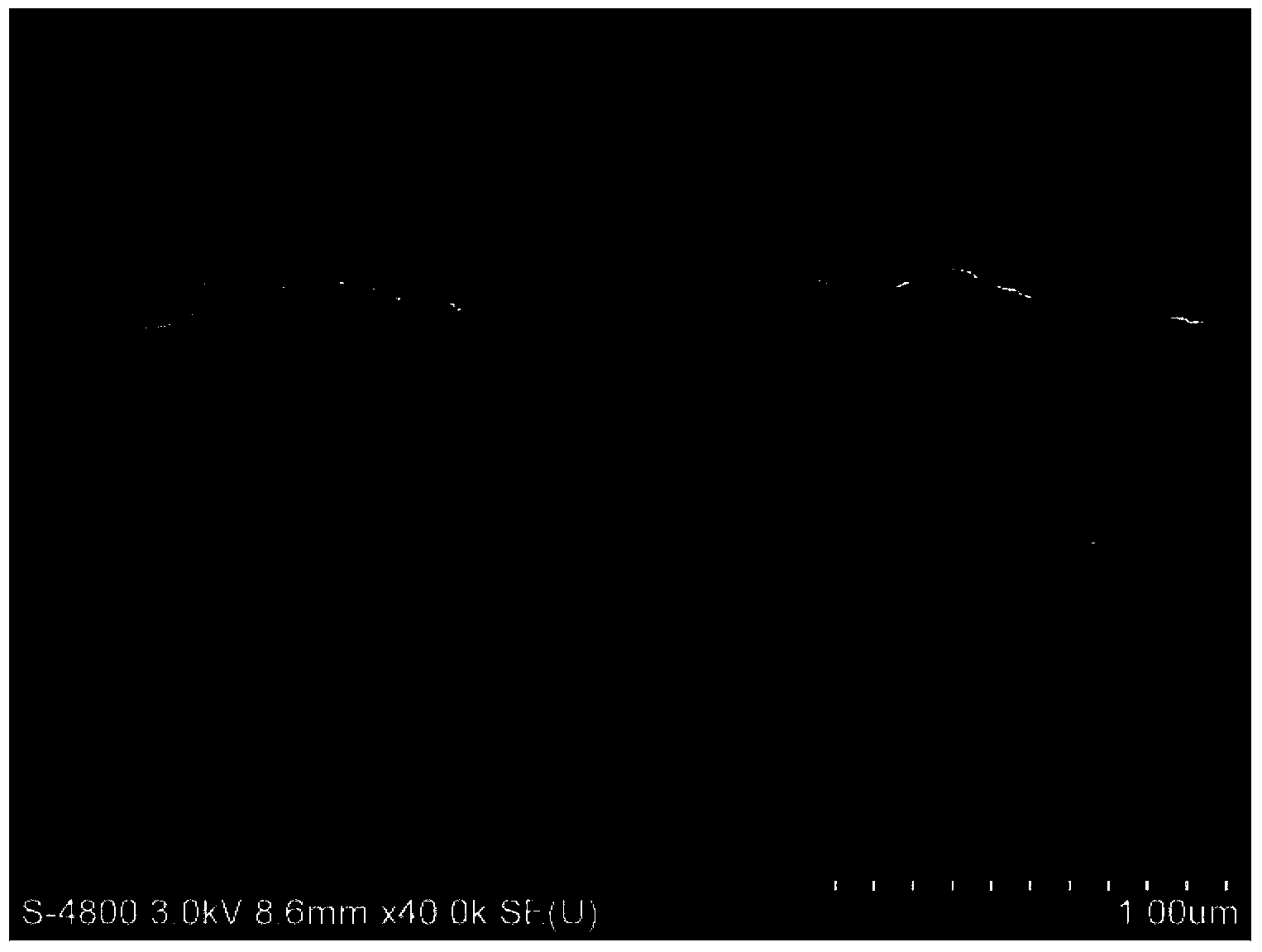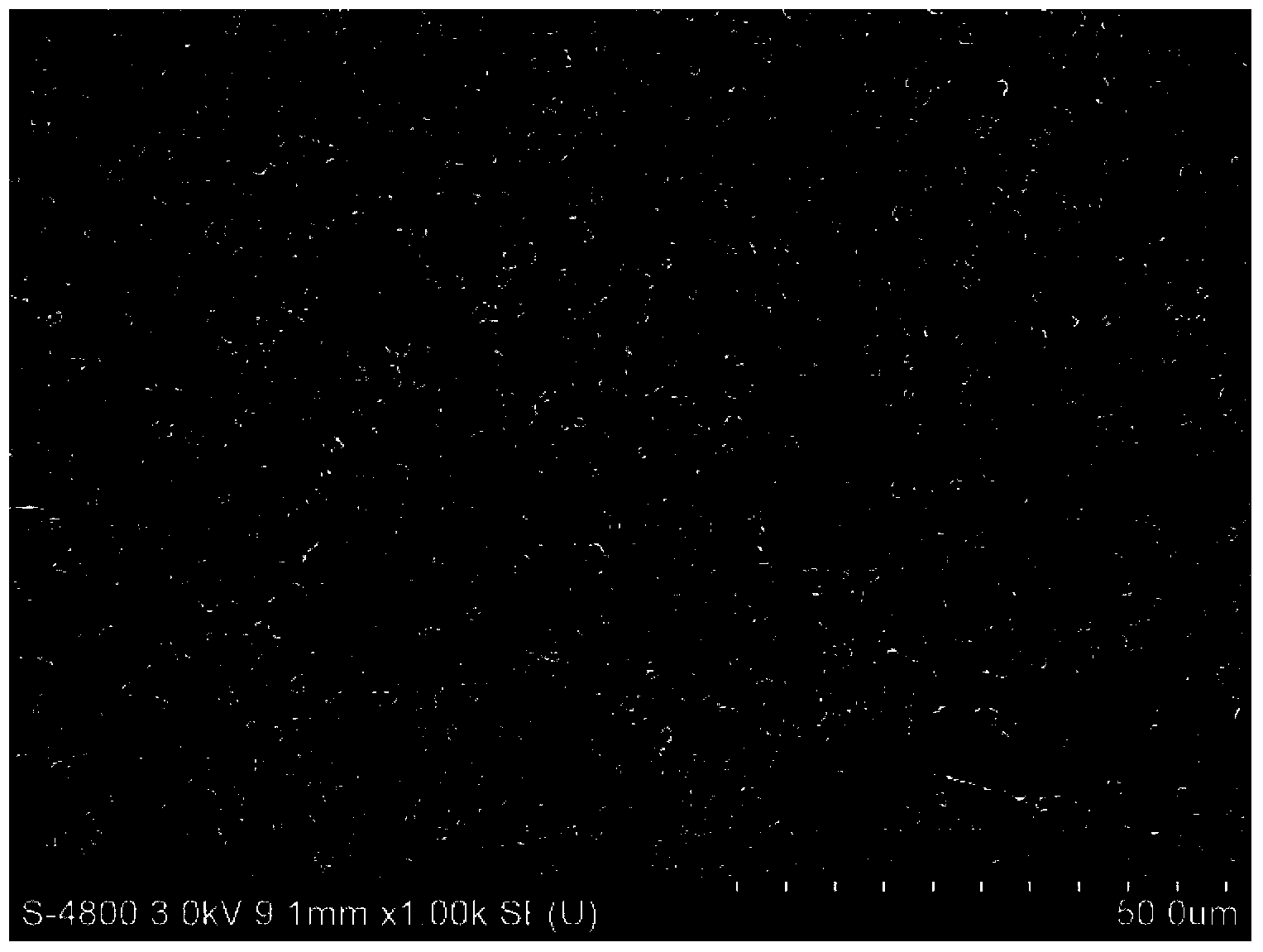Medical degradable bioglass/phytic acid composite coating on surface of magnesium alloy and preparation method thereof
A technology of biological glass and composite coating, applied in the direction of coating, etc., can solve the problems of poor bonding with magnesium alloy matrix, poor degradability, loose outer layer, etc., and achieve good cell adhesion and growth, good biological activity, The effect of uniform structure
- Summary
- Abstract
- Description
- Claims
- Application Information
AI Technical Summary
Problems solved by technology
Method used
Image
Examples
Embodiment 1
[0034] The bioglass 45S5 system is selected, in which SiO 2 -CaO-Na 2 O-P 2 o 5 The mass fraction ratio is: 45:24.5:24.5:6, and the selected mesoporous templating agent is F127.
[0035] Step 1: Preparation of mesoporous bioglass coating
[0036] First, dissolve 0.87g of F127 in 72ml of absolute ethanol, stir to clarify, and use it as a template agent. Dissolve 1.38g of sodium nitrate and 2.12g of calcium nitrate in 40ml of deionized water to prepare an inorganic salt solution for use. Choose tetraethyl orthosilicate, 0.1M dilute nitric acid, and triethyl phosphate as raw materials, mix according to the volume ratio of 30:20:3, stir for 30 minutes, add template agent and inorganic salt solution in turn, and then hydrolyze for 2 hours to end. The prepared sol can be used after standing for 18 hours. The magnesium alloy matrix is processed into a block of 10mm×10mm×2mm, using 800 # ~2000 # Polished with SiC sandpaper, and then cleaned with deionized water. The polished...
Embodiment 2
[0041] The bioglass 45S5 system is still used, and the mesoporous template agent used is F127.
[0042] Step 1: Preparation of mesoporous bioglass coating
[0043] First, dissolve 0.87g of F127 in 72ml of absolute ethanol, stir to clarify, and use it as a template agent. Dissolve 1.38g of sodium nitrate and 2.12g of calcium nitrate in 40ml of deionized water to prepare an inorganic salt solution for use. Choose ethyl orthosilicate, 0.1M dilute nitric acid, and triethyl phosphate as raw materials, mix according to the volume ratio of 30:20:3, stir for 45 minutes, add template agent and inorganic salt solution in sequence, and then hydrolyze for 1 hour to end. The prepared sol can be used after standing for 24 hours. The magnesium alloy matrix is processed into a block of 10mm×10mm×2mm, using 800 # ~2000 # Polished with SiC sandpaper, and then cleaned with deionized water. The polished sample was ultrasonically cleaned with ethanol for about 2 to 5 minutes, and repeated 2 ...
Embodiment 3
[0048] The bioglass 45S5 system is still used, and the mesoporous template agent used is F127.
[0049] Step 1: Preparation of mesoporous bioglass coating
[0050] First, dissolve 0.87g of F127 in 72ml of absolute ethanol, stir to clarify, and use it as a template agent. Dissolve 1.38g of sodium nitrate and 2.12g of calcium nitrate in 40ml of deionized water to prepare an inorganic salt solution for use. Choose tetraethyl orthosilicate, 0.1M dilute nitric acid, and triethyl phosphate as raw materials, mix according to the volume ratio of 30:20:3, stir for 1 hour, add template agent and inorganic salt solution in turn, and then hydrolyze for 1 hour to end. The prepared sol can be used after standing for 36 hours. The magnesium alloy matrix is processed into a block of 10mm×10mm×2mm, using 800 # ~2000 # Polished with SiC sandpaper, and then cleaned with deionized water. The polished sample was ultrasonically cleaned with ethanol for about 2 to 5 minutes, and repeated 2 to ...
PUM
| Property | Measurement | Unit |
|---|---|---|
| pore size | aaaaa | aaaaa |
| thickness | aaaaa | aaaaa |
| thickness | aaaaa | aaaaa |
Abstract
Description
Claims
Application Information
 Login to View More
Login to View More - R&D
- Intellectual Property
- Life Sciences
- Materials
- Tech Scout
- Unparalleled Data Quality
- Higher Quality Content
- 60% Fewer Hallucinations
Browse by: Latest US Patents, China's latest patents, Technical Efficacy Thesaurus, Application Domain, Technology Topic, Popular Technical Reports.
© 2025 PatSnap. All rights reserved.Legal|Privacy policy|Modern Slavery Act Transparency Statement|Sitemap|About US| Contact US: help@patsnap.com


